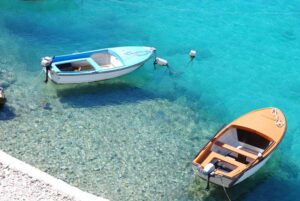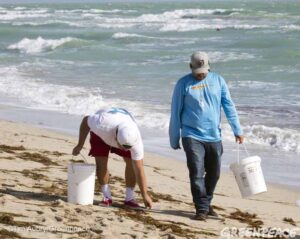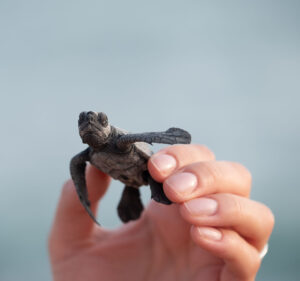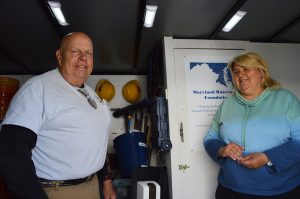COVID-19 MAY HAVE put a new spin on how we boat, but it has not put a stop to the boating lifestyle — perhaps just the opposite. Many brokers are reporting a spike in boat sales as people look for new ways to enjoy the outdoors safely and maintain social distance.
That is not saying the global virus hasn’t negatively impacted the industry. The constraints of COVID protocols caused boat show cancellations and issues with safely staffing manufacturing facilities. Many marinas had to reduce services, and slips went unused while everyone tried to understand what best practices would look like for everyone. As the industry adjusted how it would provide resources and services, boaters continued to maximize their time on the water.
For the environment, COVID-19 has brought both positive and negative changes to our seas, rivers and boating lifestyle.
Protection & Enforcement Challenges
Organizations that champion the environmental health of our oceans and waterways are faced with COVID-19 complications. Governmental agencies and nonprofits that normally provide accountability and regulations for protecting the environment are met with staffing concerns and decreased ability to provide thorough oversite. This March, the U.S. Environmental Protection Agency (EPA) announced the formation of an “Enforcement Discretion Policy.”
“EPA is committed to protecting human health and the environment, but recognizes challenges resulting from efforts to protect workers and public from COVID-19 may directly impact the ability of regulated facilities to meet all federal regulatory requirements,” said EPA Administrator Andrew Wheeler.

“This temporary policy is designed to provide enforcement discretion under the current, extraordinary conditions, while ensuring facility operations continue to protect human health and the environment.” While this temporary policy does not grant leniency for intentional violations, it may lower the effectiveness of current regulations, reduce compliance and put fragile ecosystems at risk.
Institutions dedicated to environmental research and education have struggled with reduced capabilities. Field work and volunteer efforts must adapt procedures to ensure worker safety. This naturally impacts the output of data used to assess and support environment health.
Raymond Jusseaume, president of the Manatee Audubon Society, said initially COVID concerns caused the closure of the Felts Audubon Preserve, an environmental education center in Florida. They eventually reopened the outdoor portions of the facility and continued their mission, but they are just one example of eco-friendly organizations that are forced to reduce or delay services and events.
On a More Positive Note
COVID may be making aspects of protecting our environment difficult, but we still have good news to report. The reduction of human activity due to quarantine has had a positive effect on water and air quality. Waterways, such as the canals in Venice, Italy, normally brown from excessive boat traffic and churned up silt, are seeing noticeable clearing as sediment can resettle.
Residents living near Miami’s waterways are reporting their water views are clearer than they have ever seen before. Beach closures and reduced water recreation activities are allowing nature to seemingly take a breath. Seth Bloomgarden, chairman of the Miami Surfrider Foundation, a nonprofit that advocates for clean oceans, said “The waters look crystal clear and blue, almost like something you’d see in a remote island in the Bahamas.” Restricted beach access has prevented water quality tests, but the visible changes are encouraging.

Rachel Silverstein, executive director of Miami Waterkeeper, a clean water watchdog group noted, “We don’t have hard data about what’s going on with water quality right now, but just anecdotally, it does seem that the water quality has been able to rebound exceptionally quickly, and to be really resilient when the pressure of having a lot of visitors and folks using the waterways lifted.”
One example of this is a resurgence of sea life in Florida’s Biscayne Bay. This once struggling seagrass ecosystem is now witnessing the return of dolphin pods and even two rare small-tooth sawfish, strong evidence for continuing to protect this area.
Trucks, cars, airlines, cruise ships and cargo ships have greatly decreased their movements, resulting in a noticeable drop in harmful emissions. Comparative satellite images of the United States show a significant drop in NO2 in cities and transportation corridors. The world’s fishing fleets, mostly idle during quarantine, may allow overfished areas to experience a rebound.
While most of these positive changes are near termed or not sustainable once activity resumes, they are still “good news.” Images of once-brown waterways now blue and green, satellite views of atmospheric changes, and pictures of smog dissipating over major cities have made it hard to miss the correlation between human activity and the environment. This real-world lesson may create greater awareness of the need for changes in how we impact our environment.
For boaters, opportunities to take part in promoting environmental health are still available. Coastal cleanup events are still taking place, only with social distancing in mind. Participants are encouraged to collect individually and share their results. The Ocean Conservancy’s “Clean Swell App” continues to be a great resource for combining the data from trash collections around the world. Also, consider providing financial support for local or global organizations that work to protect our oceans, rivers and lakes.
Boaters can continue to be good stewards of our beloved waterways. This season of life for our world is a reminder that what we do as individuals matters beyond ourselves.
Check out other articles on eco-friendly boating here!





